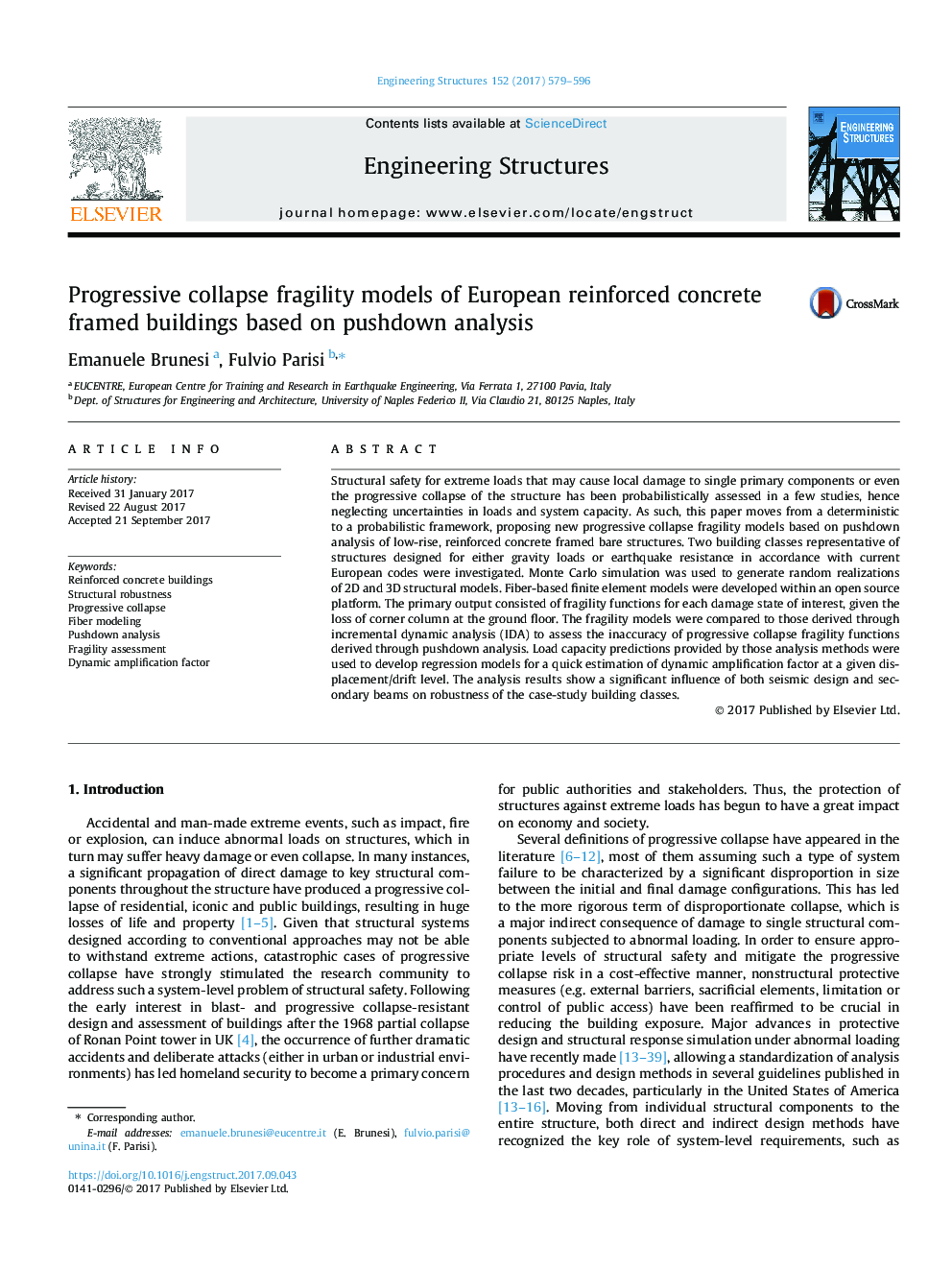| Article ID | Journal | Published Year | Pages | File Type |
|---|---|---|---|---|
| 4919716 | Engineering Structures | 2017 | 18 Pages |
Abstract
Structural safety for extreme loads that may cause local damage to single primary components or even the progressive collapse of the structure has been probabilistically assessed in a few studies, hence neglecting uncertainties in loads and system capacity. As such, this paper moves from a deterministic to a probabilistic framework, proposing new progressive collapse fragility models based on pushdown analysis of low-rise, reinforced concrete framed bare structures. Two building classes representative of structures designed for either gravity loads or earthquake resistance in accordance with current European codes were investigated. Monte Carlo simulation was used to generate random realizations of 2D and 3D structural models. Fiber-based finite element models were developed within an open source platform. The primary output consisted of fragility functions for each damage state of interest, given the loss of corner column at the ground floor. The fragility models were compared to those derived through incremental dynamic analysis (IDA) to assess the inaccuracy of progressive collapse fragility functions derived through pushdown analysis. Load capacity predictions provided by those analysis methods were used to develop regression models for a quick estimation of dynamic amplification factor at a given displacement/drift level. The analysis results show a significant influence of both seismic design and secondary beams on robustness of the case-study building classes.
Keywords
Related Topics
Physical Sciences and Engineering
Earth and Planetary Sciences
Geotechnical Engineering and Engineering Geology
Authors
Emanuele Brunesi, Fulvio Parisi,
